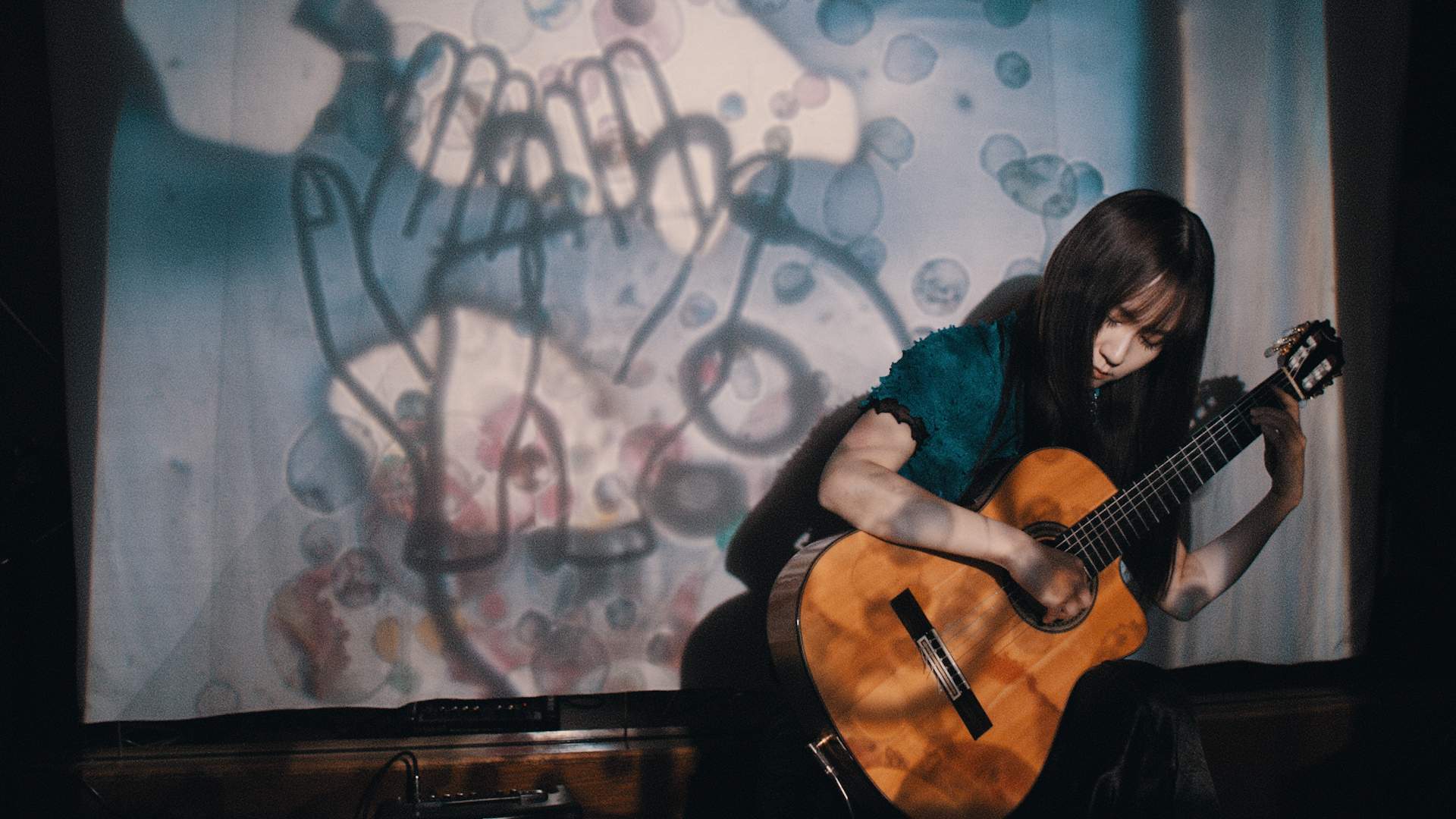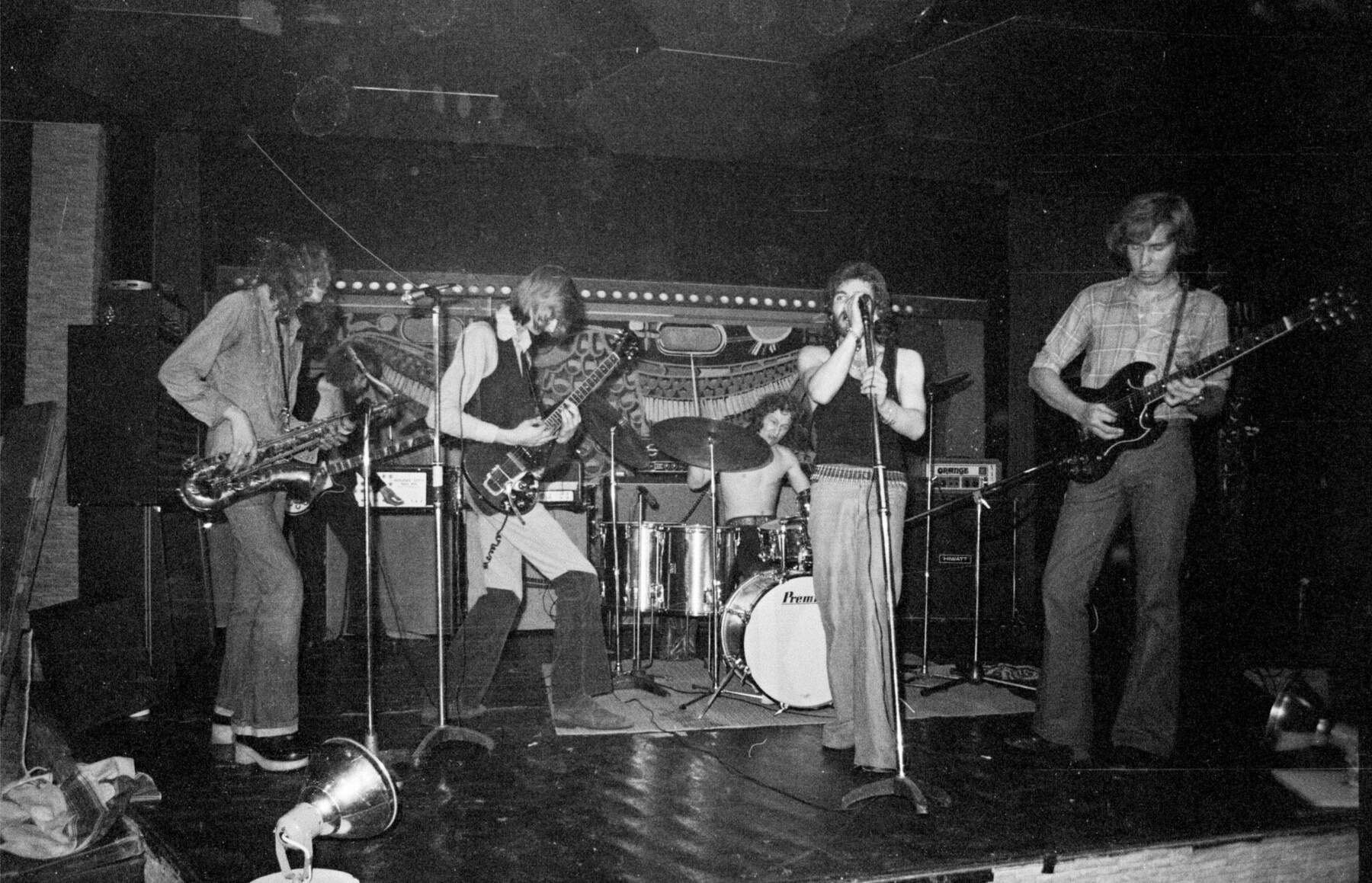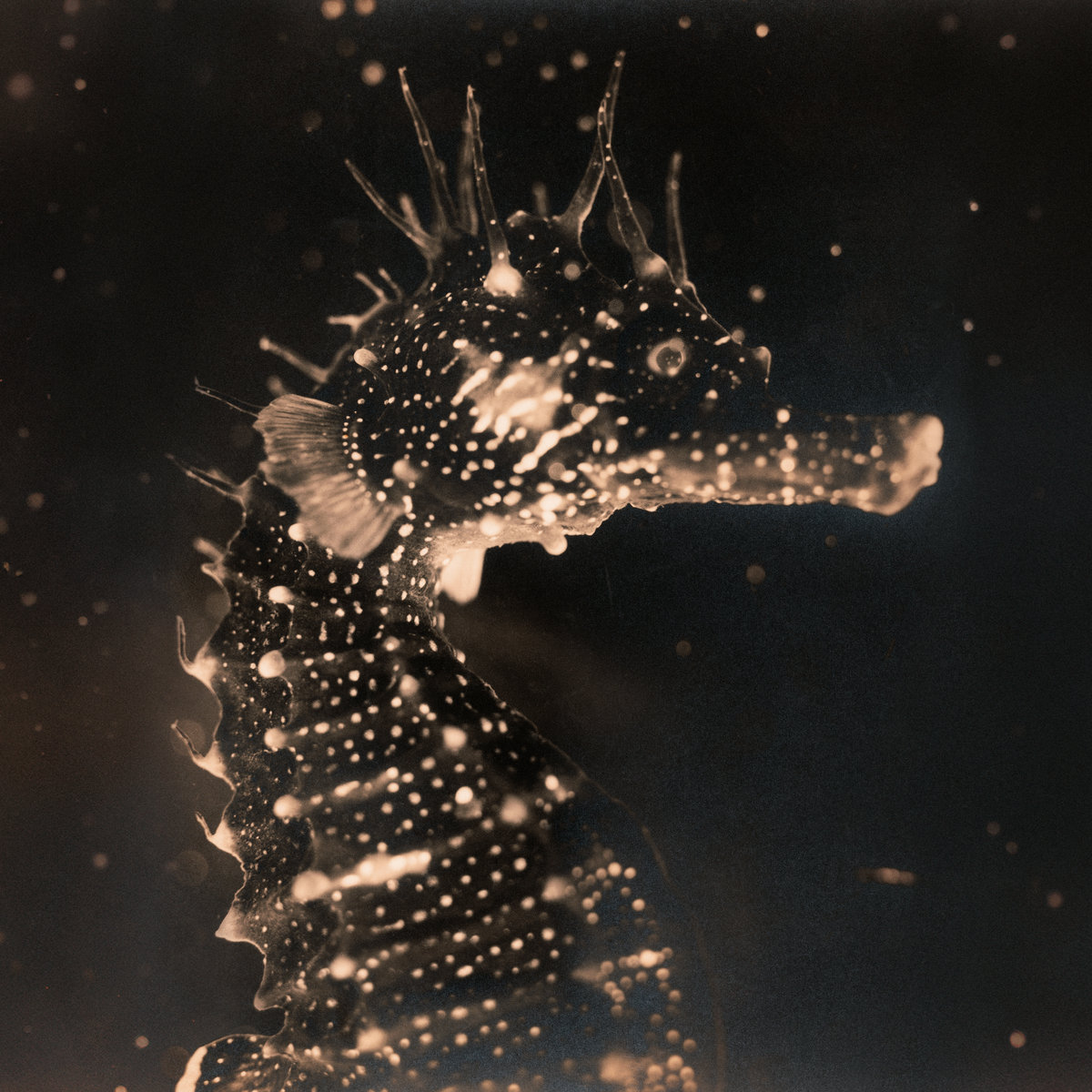Ayane Shino Plays Rei Harakami: ‘River せせらぎ’ and the Art of Interpretation
Ayane Shino’s ‘River せせらぎ: The Timbre of Guitar #2’ is a beautifully intimate tribute to the late Rei Harakami, out now via Musicmine and Sublime Records.
Known for his lush, dreamy electronics, Harakami’s work might not seem like the most obvious choice for classical guitar, but Shino makes it feel completely natural. Across ten tracks, she pulls Harakami’s music into a quieter, more acoustic space, finding all the subtle melodies and emotional undercurrents that sometimes floated just beneath the surface. It’s gentle, warm and deeply thoughtful, full of moments that feel both familiar and entirely new. Like her earlier Yokota tribute ‘Sakura,’ this isn’t just a set of covers—it’s a kind of conversation between artists across time, technology and tone. Shino’s playing is expressive without ever being showy, and her arrangements carry a real sense of care and curiosity. ‘River’ extends Harakami’s legacy, offering a new way to connect with his music.
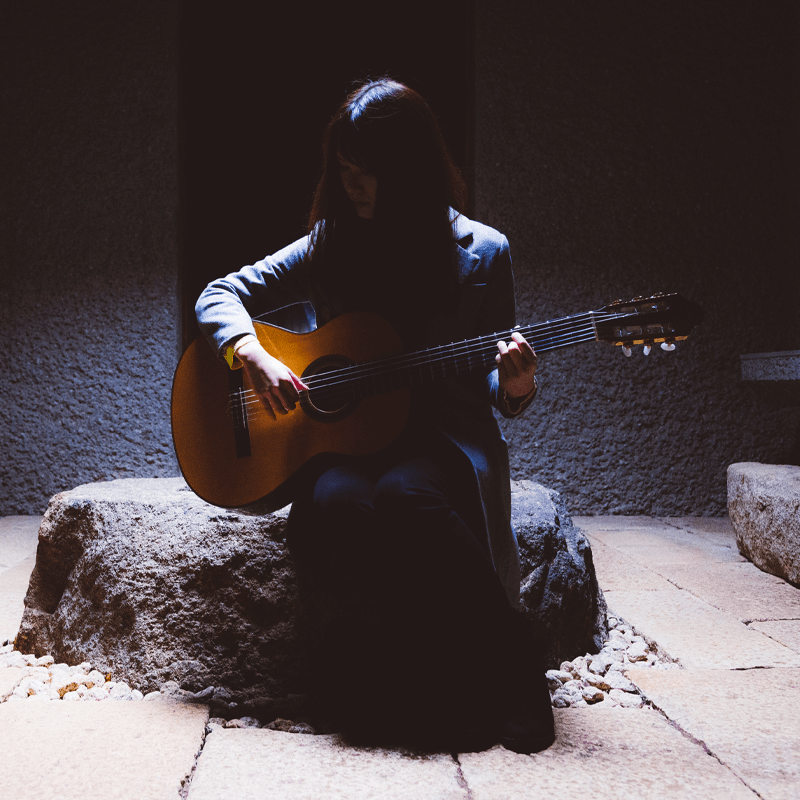
“It’s hard to match the warmth of human performance with the precision of machines.”
When you first dove into Harakami’s music, was there a specific track that just lit something up in you? Like, “Oh yeah, I need to get this onto my guitar”?
Ayane Shino: When I heard his music for the first time, I immediately felt a familiarity with it, as it was easy to imagine it with the sound of a classical guitar, and many of the pieces were in easy-to-play keys. I found it fascinating that I can recognize Harakami’s music from a single note, and that such a wide range of expression can be achieved with the use of just one instrument. Likewise, I also strive to play the sounds that I want to express with a wide range of expression by using only one instrument, the classical guitar.
Incidentally, the first songs on the album that I worked on were ‘long time’ and ‘last night.’ The whole of ‘long time’ resembles the harmonics technique often used in guitar playing, so I thought I could create a similar atmosphere to the original, and I immediately set about recreating it on a guitar.
I realized that ‘last night’ was composed in a key and rhythm that was easy to play on a classical guitar, and I also thought I would be able to make a cool version of this song by playing it with the sound of a guitar, and I also wanted to incorporate it into this project.
You’ve talked about the floating sensation in his music, how did you go about capturing that kind of weightless feeling with an acoustic instrument? Did you find yourself having to unlearn anything?
The method of how I positioned, the speed and angle in which my fingers plucked the guitar strings, and other subtle controls in the performance helped to create a floating effect.
I imagine there were moments where you got totally lost in the arrangements, did you ever fall into a kind of trance while working on a particular piece?
When I am immersed in arranging something, I often lose my sense of time. In this album, out of all the tracks that I covered, I felt particularly a liking to ‘joy,’ and it kept playing in my head for a while, even when it was time to get away from working on the arrangement and do something else.
Were there any points where the limitations of the guitar actually pushed you toward more interesting ideas? Like the instrument forcing your hand in a good way?
I felt constrained by the fact that guitar sounds do not extend for a long time and decay quickly. Sustained notes with long sustain often appear in his music, so I always wondered how I could effectively reproduce them on the guitar. In order to get closer to his sound in terms of playing technique, I made a conscious effort for my left-hand playing to be smooth so that each note would be connected effortlessly.
For example, in arranging the song ‘river,’ I used a tremolo technique to express a sustained sound.
Your playing always feels super intimate and inviting, like it whispers rather than shouts. Do you think that’s something you naturally lean into, or is that a conscious choice?
Having played classical guitar for many years since childhood, I may have my ‘own sound’ that appears naturally without me realizing it. But of course, I wanted to reproduce the same impression I got from his works as much as possible on an acoustic instrument of a guitar, so I was conscious in my choice of my playing method.
Did you dig into any of Harakami’s live sets or rare stuff on YouTube while working on this? Curious if anything unexpected shifted your perspective on a track.
In addition to the songs on the albums that he released, I have also watched his live videos on YouTube and listened to numerous other sources including unreleased recordings and interviews that were aired on the radio. The phrases, rhythms, and sound images I heard in these various recordings were incorporated into the arrangements in tiny quantity, like spice.
Do you think of these arrangements more as direct translations or as reinterpretations? Are you trying to be a medium for his voice or filter it through yours?
With the use of a classical guitar, the image of the original piece naturally changes, but I think that there is both a desire for me to convey the sound as he expressed directly, and a desire to convey it to the listener as a new, personal sound and interpretation that was created by myself.
The word “timbre” is front and center in this series, what does that mean to you, beyond the technical definition? What kind of colors or textures were you chasing?
The classical guitar is an expressive instrument capable of producing a wide variety of tones, so much so that it is often referred to as “a one instrument orchestra.” The guitarist is always required to have precise control over the timbre. This series of works is built solely on the classical guitar, but I created it in pursuit of the fascination and interest of being able to express a variety of tones with only one guitar.
There’s this sharp contrast between the precision of electronic music and the human warmth of classical guitar. How did you find that balance without losing the soul of either?
It is difficult to strike a balance between human performance, which cannot play twice exactly the same nuances, and electronic music, which produces a stoic, mechanical sound. Many parts of this album may have been tackled intuitively. I believe that by incorporating emotionally charged human changes into mechanically precise music, we can find new and interesting ways of expressing the best of both worlds.
When did you know a track was finished? Was it more of a gut feeling, or were you constantly tweaking until the very end?
The performance content was first of all solidified and transcribed as a score. Based on this, during the recording process, I fine-tuned the detailed image of the tones created by the different ways of playing.
Having done Yokota before this, did you approach Harakami’s music differently? What changed in your process between the two albums?
I don’t think that my initial approach to arranging Yokota-san’s music changed the way I approached Harakami-san’s music. I knew from the start that my approach would be different because the music of Yokota-san and Harakami-san, which I covered, is completely different. For Yokota-san’s, I devised a layering of sounds that would create a rich spatial resonance and a sense of envelopment. For Harakami-san’s album, I worked on how I could create a sense of beat using only the guitar, and how I could create a sound close to the original song by devising guitar techniques, while at the same time being conscious of conveying guitar-like expressions.
There’s definitely a sense of reverence on this record, but it still feels light, like it’s breathing. How did you keep the emotion alive without making it feel too heavy?
I performed the piece with the feeling that I was having a conversation with Harakami-san’s music. His music itself, which I covered this time, is light and beautiful, so I worked on it with the desire to express it as close to how it is.
Warmth comes up a lot when people talk about both your playing and Harakami’s music. What does “warmth” sound like to you? How do you know when you’ve found it?
I think it is important for ‘warmth’ to be a sound that conveys sincerity and compassion when dealing with people and music. When “warmth” is conveyed through sound, I think it feels very comfortable.
You’ve got this wild range of experiences — orchestras, film scores, radio — did any of that sneak into this project, even in subtle ways?
I believe that gaining a wide and varied range of experiences is greatly reflected onto my own music. I always want to pursue new forms of expression that fuse all elements without limiting myself to a specific genre.
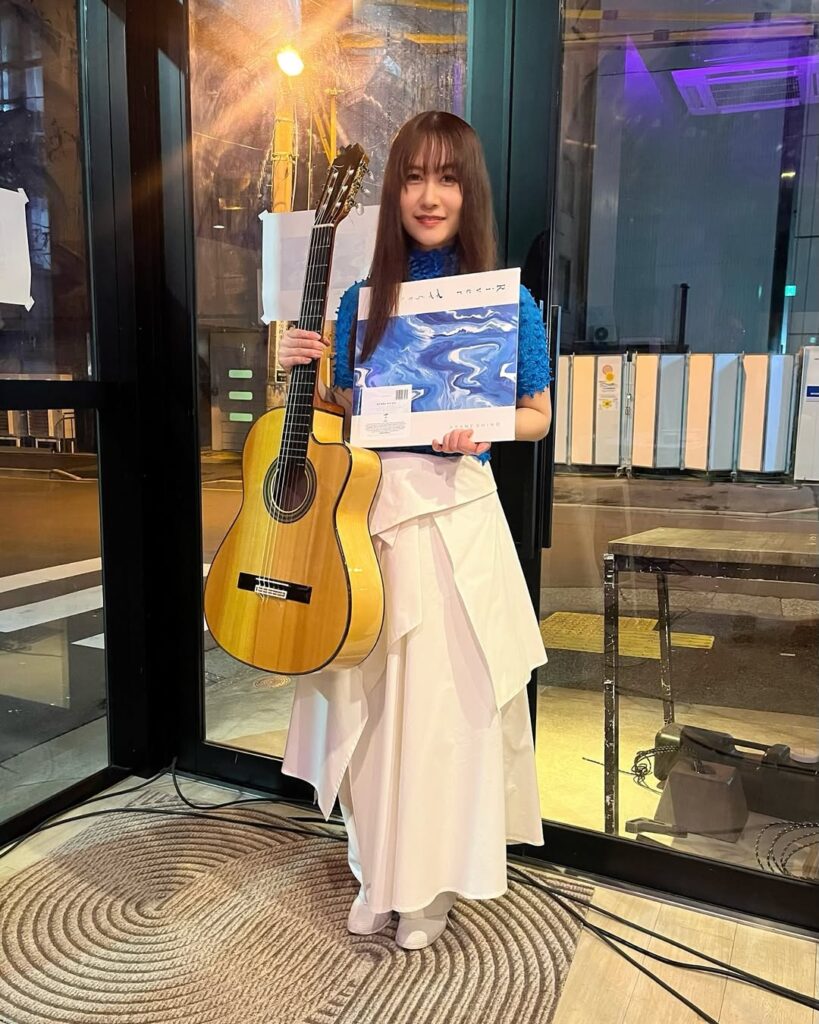
If you could sit down and have tea with Harakami now, what’s the first thing you’d play for him? Or is there a question you’d love to ask him?
First of all, I would like him to hear the two songs, ‘the backstroke’ and ‘river’ played live. If I am able to meet Harakami-san, I would like to have a conversation with him through performance.
Klemen Breznikar
Ayane Shino Website / Facebook / Instagram / X / Bandcamp
Musicmine Website / Facebook / Instagram / X / YouTube / Bandcamp

